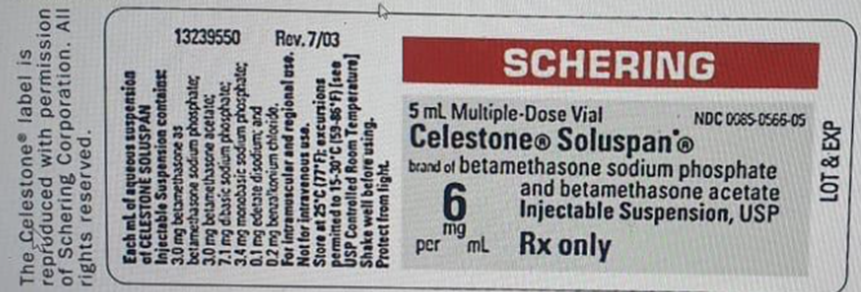Calculate the dosage using the label below. Round to the nearest tenth place. Order: Celestone, Soluspan (betamethasone) 12 mg IM q24 hr. for 2 doses. Available

0.5 mL sub-cut
1 mL Stat
4 mL IV
2 mL IM
The Correct Answer is D
Rationale:
Ordered Dose:
The prescription is for 12 mg of Celestone Soluspan (betamethasone) IM every 24 hours for 2 doses.
Available Dose (from label): The vial contains 6 mg/mL.
Dosage Calculation: Using the formula:
Volume to administer (mL) = Available concentration (mg/mL) / Ordered dose (mg)
Volume to administer = 12mg / 6mg/mL = 2 mL
Administration Route:
The order specifies IM (intramuscular) administration, aligning with the label instructions.
Thus, 2 mL IM is the correct dosage to administer.
Nursing Test Bank
Naxlex Comprehensive Predictor Exams
Related Questions
Correct Answer is A
Explanation
Given:
Value in grams: 5,524 g
To convert grams to kilograms, we need to divide the value by 1000.
Step 1: Divide the value by 1000:
5,524 g / 1000 = 5.524 kg
Correct Answer is D
Explanation
A) Nausea
Nausea is not the most common or primary complication associated with thrombolytic drugs. While some patients may experience nausea as a minor side effect, it is not the hallmark complication of thrombolytic therapy. Thrombolytic drugs are used to dissolve blood clots, and their primary concern is related to bleeding due to their potent effect on clotting factors.
B) Hypertension
Hypertension (high blood pressure) is not typically associated with thrombolytic therapy. In fact, thrombolytic drugs are more likely to cause hypotension (low blood pressure) in some cases, especially if bleeding complications lead to significant blood loss.
C) Fever
Fever can occur as a side effect of many medications or conditions, but it is not a common or direct complication of thrombolytic therapy. Fever may occasionally arise as a response to infection, inflammation, or even the breakdown of clots, but it is not a primary concern when using thrombolytic drugs.
D) Bleeding
Bleeding is the most common and serious complication associated with thrombolytic drugs. These medications work by breaking down fibrin, the protein responsible for clot formation, to dissolve blood clots. While this is beneficial in conditions like myocardial infarction, stroke, or pulmonary embolism, it increases the risk of bleeding throughout the body. Bleeding can occur at various sites, including internal bleeding, gastrointestinal bleeding, and bleeding at the injection site.
Whether you are a student looking to ace your exams or a practicing nurse seeking to enhance your expertise , our nursing education contents will empower you with the confidence and competence to make a difference in the lives of patients and become a respected leader in the healthcare field.
Visit Naxlex, invest in your future and unlock endless possibilities with our unparalleled nursing education contents today
Report Wrong Answer on the Current Question
Do you disagree with the answer? If yes, what is your expected answer? Explain.
Kindly be descriptive with the issue you are facing.
